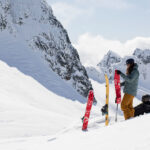Built on Olympic ambition, the resort town of Whistler is, by design, a mecca for athletes from all over the world. If you’re the best of the best, it’s the place to be, and to train. But what about the regular folk? What if you weren’t skiing before you could walk? What if you didn’t even grow up with snow? I decided to find out what it feels like to be an adult beginner on cross-country skis.
To say I was feeling some trepidation about my cross-country challenge is an understatement. The only time I had ever clipped into skis was on a University club trip, back in Australia, in my early twenties. It was a disaster. And it hurt. Every time the group came to a stop, I was the last one to arrive, and with perfect comedic timing, I would inevitably fall sideways, toppling my friends like a series of ill-fated dominoes. At the end of that day my ego was about as bruised as my body, and I vowed never to ski again.
Fast-forward fifteen years, and I’m wondering what I’ve got myself into. I’m worried that I won’t be able to do it; that I’ll either hold everyone up, or knock them down, or both. It’s this impending-disaster mindset that I take with me to my Discover Classic Lesson with Cross Country Connection.
Getting Started
I arrive at the PassivHaus at Lost Lake Park, just a short walk from Whistler Village. The PassivHaus was designed and made in Austria, and assembled in Canada, to showcase the future of ‘green’ buildings at the 2010 Olympic Games. It was Canada’s first registered Passive House, using about 90% less energy than a conventional building, and the home of the 2010 Austrian Olympic and Paralympic teams. Even the building was in the Olympics!
I’m fifteen minutes early, as instructed, to sign waivers and be fitted for ski boots. I’m expecting the kind of flesh-pinching, torture-plastic, that I see the downhill skiers wearing. Instead, I’m pleasantly surprised to be given soft, comfortable shoes, that look and feel just like hiking boots. No long socks required.
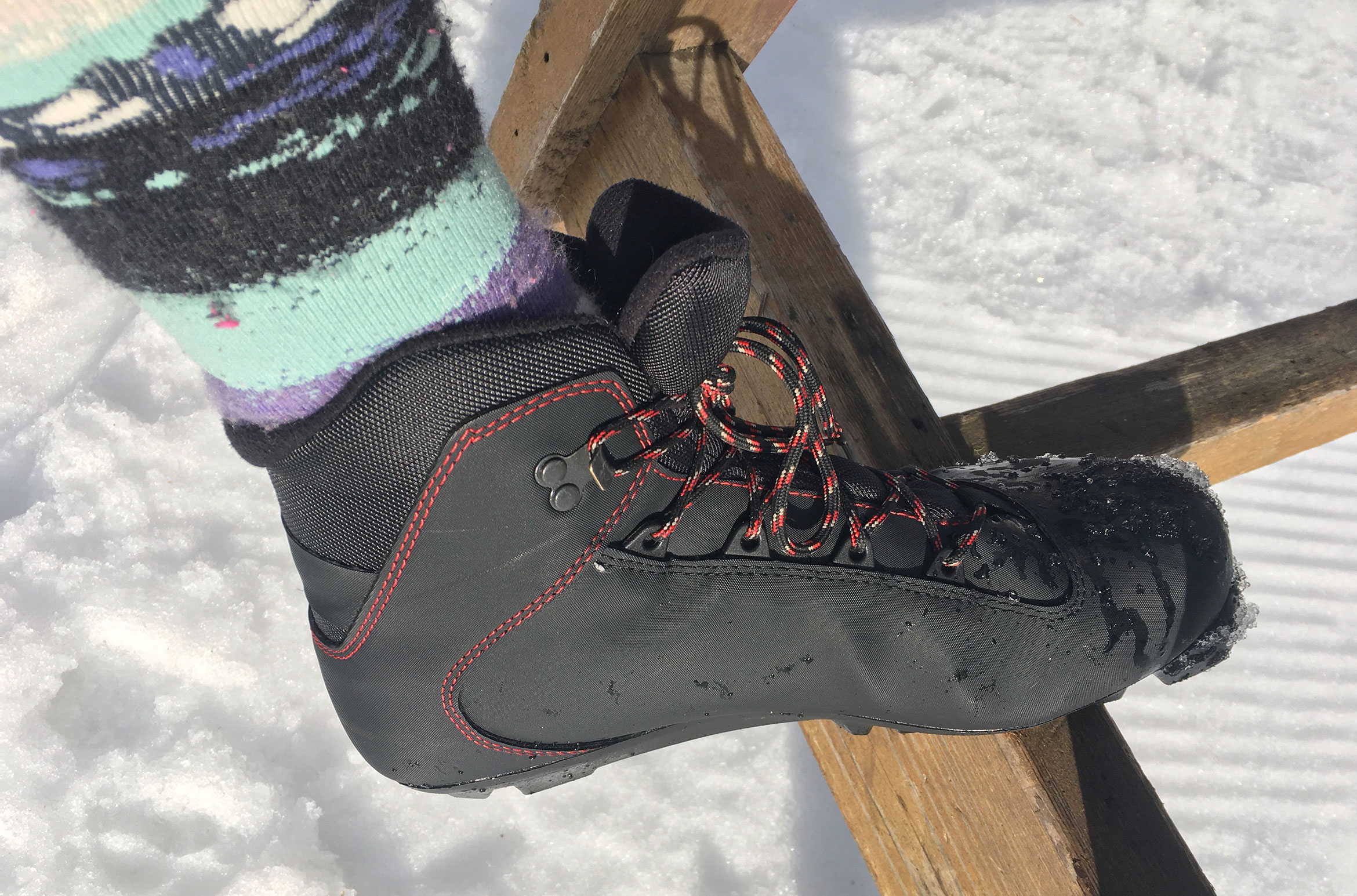
With my ski boots on, I walk outside to get my skis and meet the rest of my group. They assure me that at least two of their party are complete beginners, and the others have only a little experience. I feel better. It’s not just me who has no idea what they’re doing.
We meet Bob, our CANSI (Canadian Association of Nordic Ski Instructors) certified instructor, and carry our skis through the log entrance of Lost Lake Park. Walking in my fancy boots is easy. So far, so good.
And We’re Off
Bob instructs us to move to the track, two parallel groomed slots, at the start of the trail. My group promptly drop their skis, step easily into them, and ski over to the track in a single, organised file.
I try to replicate what everyone else just did, but every time I step on the ski and lift up my foot, my ski is not attached. I wave frantically and Bob comes to my aid, a mixture of concern and confusion on his face. It turns out that all my fellow “beginners” are actually downhill skiers, and it hasn’t occurred to anyone that I have no idea how to even put skis on. Bob smiles and calmly shows me how to position my boot on the ski so that it clips in. It’s actually not that hard, once you know-how. My second nice surprise for the day is that only the toe needs to be clipped in – my heel is free to move up and down.

Bob announces to the group that our first skiing exercise requires only one ski and no poles. I’m excited about the one ski part. Our task is to keep one ski in the track and push off with our free foot, trying to let the ski foot slide forward as much as possible. A bit like skateboarding, or riding a scooter. As the group practises sliding forward, a person in front of me goes down. Bob helps them up, they’re ok, more embarrassed than injured. I can’t help thinking, at least it wasn’t me!
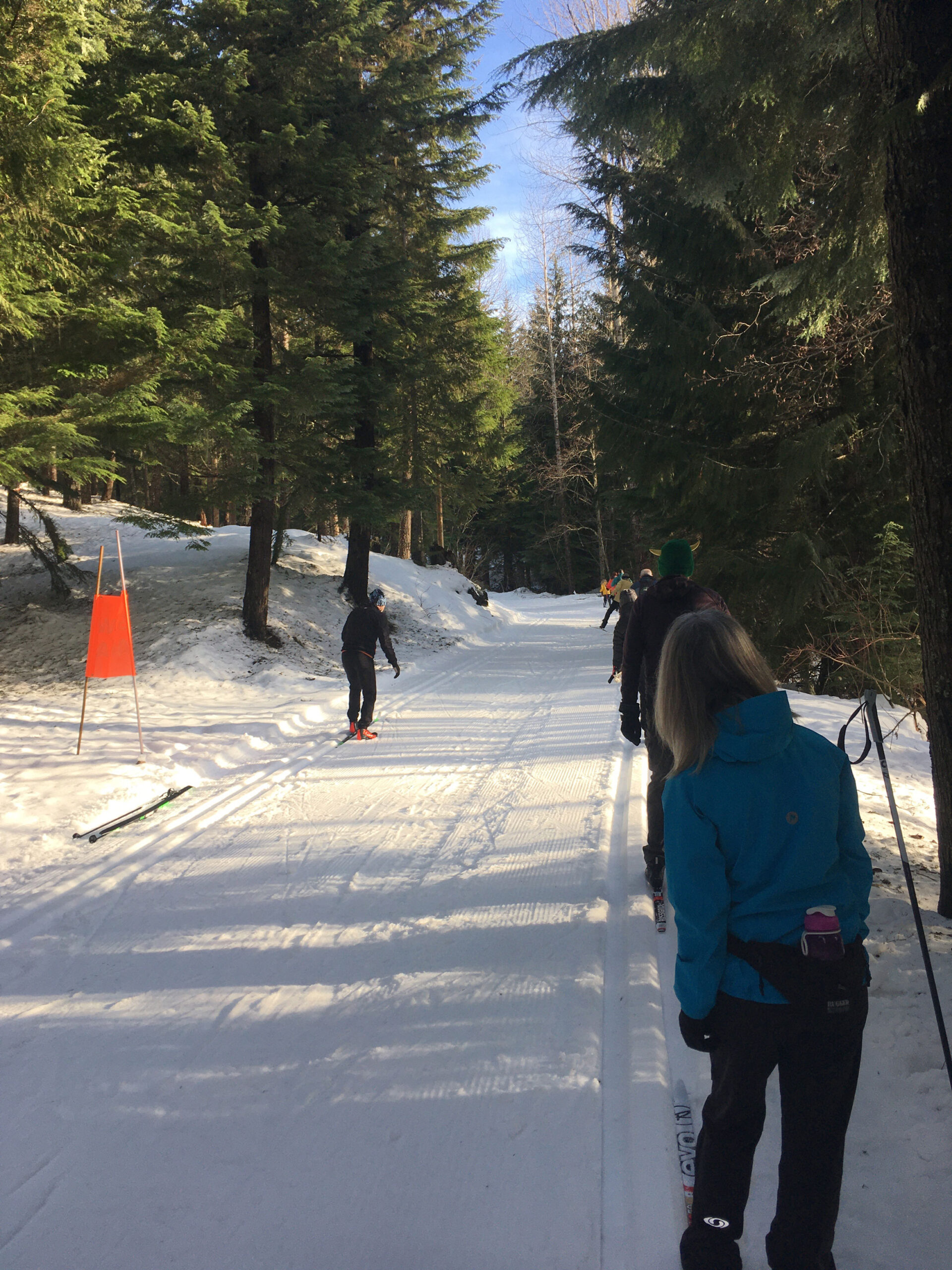
We spend about forty-five minutes working through a series of exercises, each one building on the last. The freshly groomed track makes a huge difference to my learning curve as it keeps my skis separate and parallel, allowing me to concentrate on shifting my weight and coordinating my poles into a kind of running motion. The cross-country-specific skis also have a section of grip under the binding that helps me to push off through the ball of my foot.
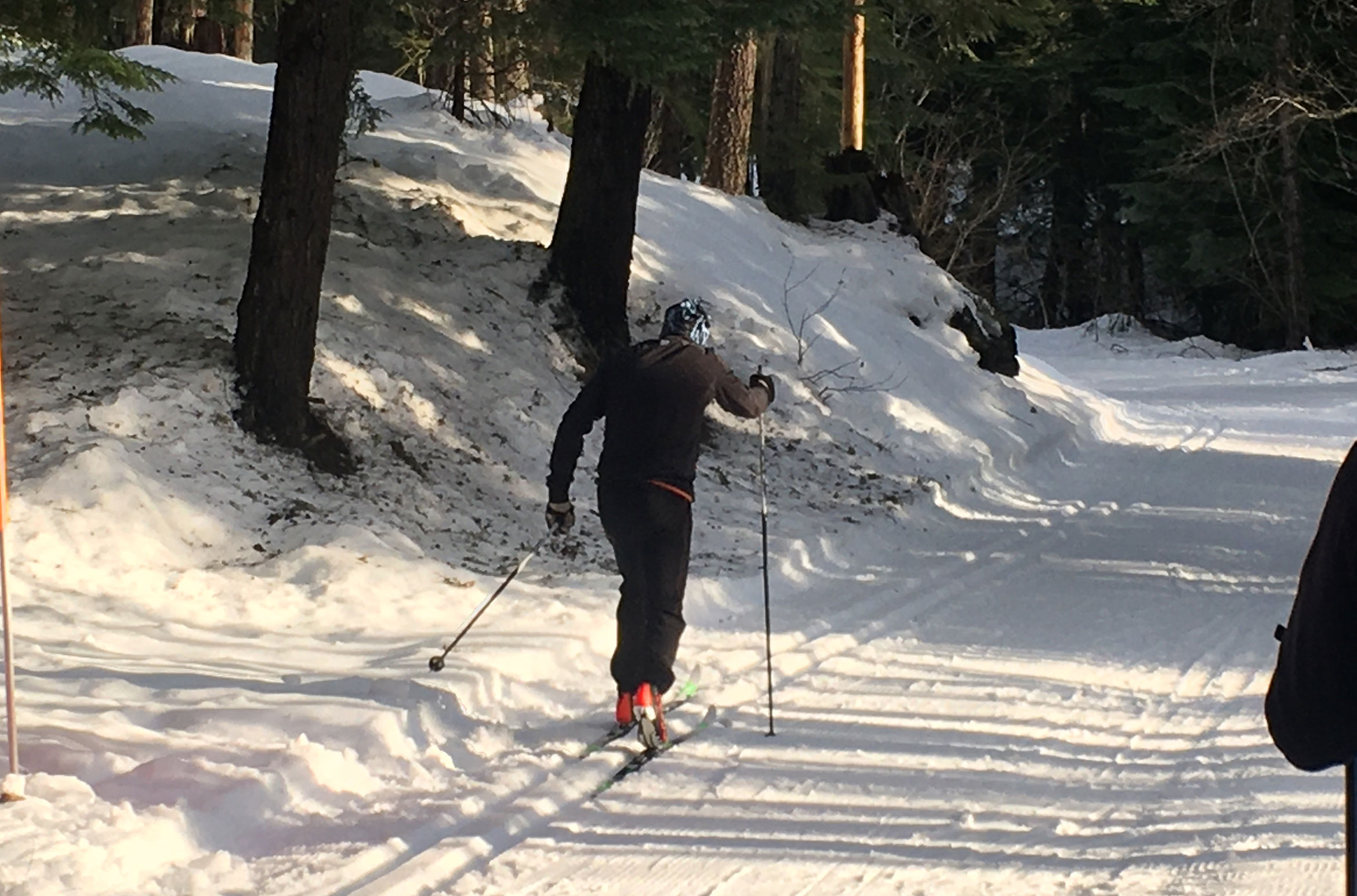
I’m so busy focussing on the skills in each exercise and trying to keep up with the group, that after a while I forget to be scared. Bob comes to check on me and sounds genuinely surprised when he says, That’s looking good!
It’s starting to feel good too. Maybe I can do this?
Building Confidence
It’s a question I don’t have long to ponder. Bob says we’re ready to head to the lake and the group is off, excited to finally be moving past the first 100m of the trail. There’s no time to doubt myself as I have to work hard to keep up.
We stop briefly to regroup before a section of downhill, and Bob offers the option of coming out of the tracks to practise controlling our speed. I carefully side-step to the middle of the trail, summon up some more courage, and successfully ‘pizza slice’ my edges like we practised, arriving safely at the bottom of the slope.
At Lost Lake beach, the lesson is suddenly over. Seventy-five minutes have flown past! Bob encourages us to keep practising and provides us with an overview of the different trails.

The group invites me to join them on a loop of the lake, and I gratefully accept. I’m feeling more confident, but it’s nice to have people looking out for me.
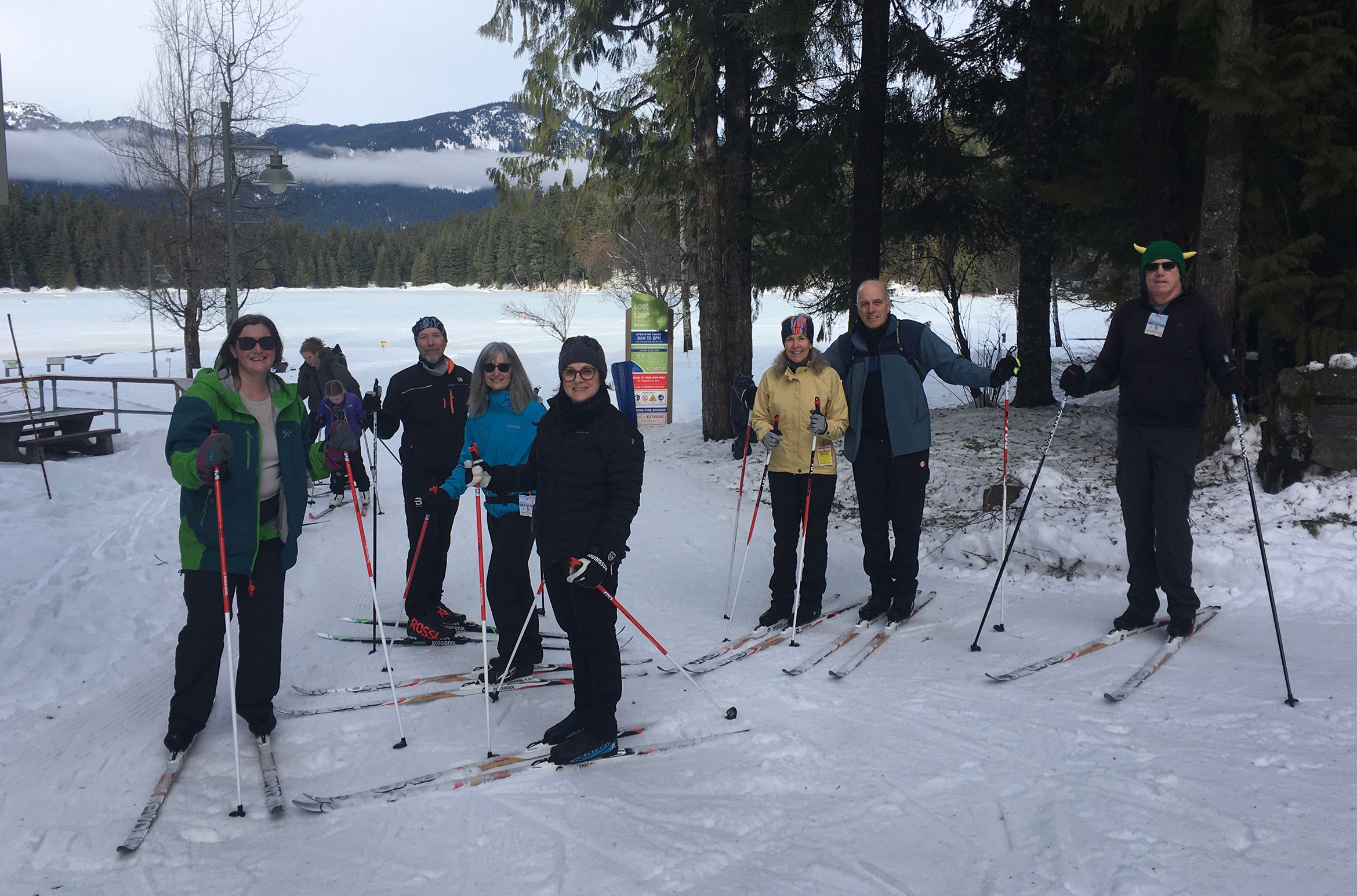
When we make it back to the PassivHous I’m stoked, but also exhausted. When everything is working, cross-country skiing feels like running, but without the heavy impact on my ankles and knees.
I celebrate my successful morning at the PassivHaus café, with a delicious slice of apple cake made with local Pemberton apples and a latte made with locally roasted beans from Pemberton Valley Coffee Company.
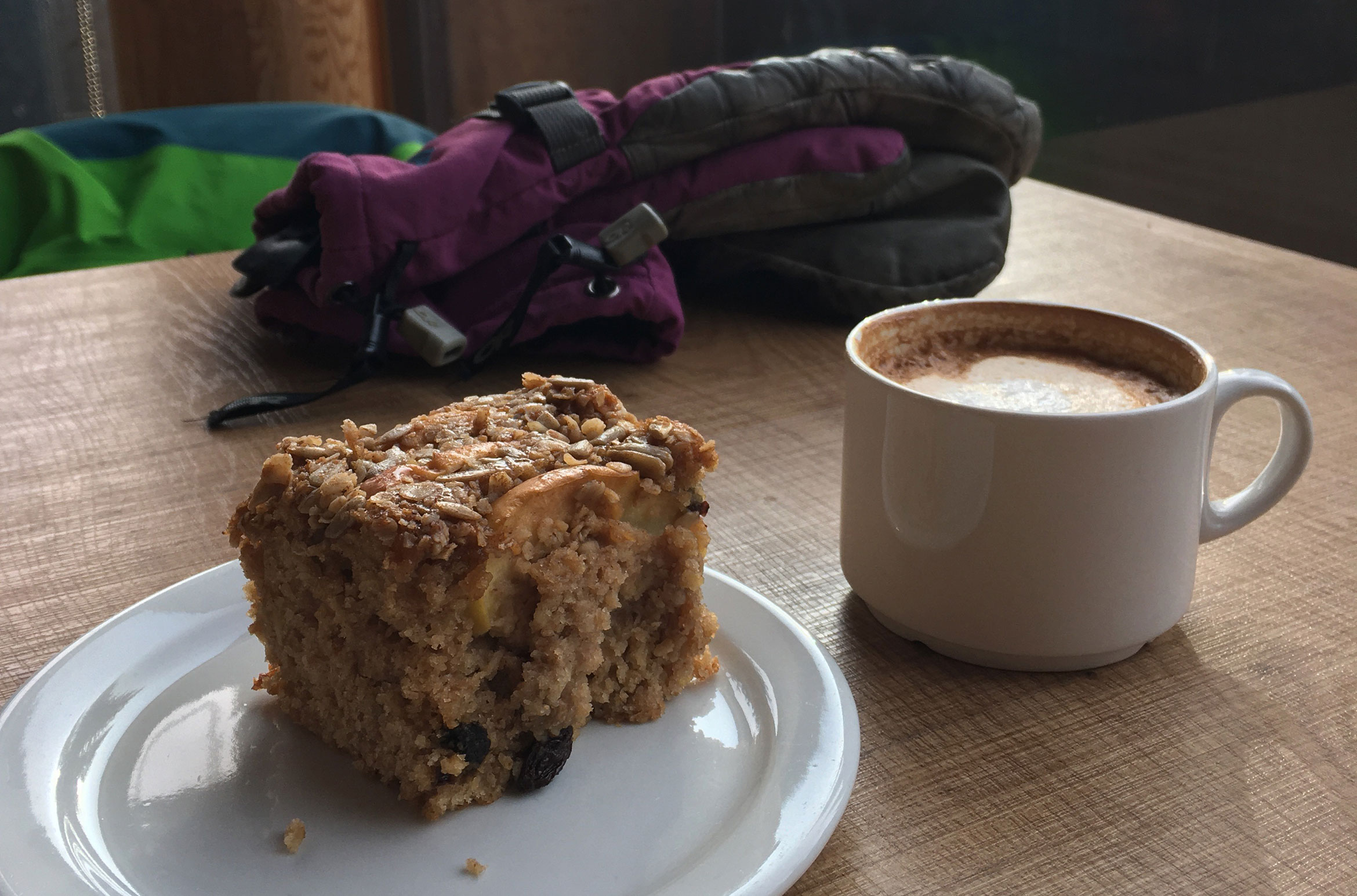
I almost don’t want to leave, but I know I’ll be back. It turns out that with the right instruction even this anxious, uncoordinated Australian can learn to ski.
Top Whistler Cross-Country Ski Tips
- Take a lesson. The Discover Classic Package was perfect for my ability and ambition, but they also offer Ready to Skate and Private lessons for more advanced skiers.
- Layer up. As you’re working out, you’ll get warm quickly. You don’t need quite as many layers as you do for downhill skiing, but ideally, you want something stretchy, breathable and water-resistant as an outer layer, with some thermal layers underneath. You can also leave extra layers inside with your shoes.
- Bring water. A bottle belt or a hydration pack work well.
- Stretch before you go. Your leg muscles will thank you.
- Eat the cake. The cafe has lots of delicious options, including $2 homemade cookies, but the homemade apple cake is not to be missed.

Spring savings are calling! There’s so much to see and do in spring, you’ll want plenty of time for fun in the sun. Extend your stay and book midweek for increased savings, with 3 nights starting from $135 CAD per night. Coming during Nourish? Book 3+ nights between May 29 and June 30, 2025, to receive a free $100 or $200 Wellness Activity Voucher, valid for use on wellness activities or Nourish Whistler Wellness Series tickets.
For summer, book ahead and save up to 25% on lodging. Plus, you'll receive a free $100 CAD Activity Voucher on stays of 3 or more nights ($200 for 5 nights). You can also win a summer trip to Whistler with the Escape the Ordinary contest!
Insider Tip: Sign up for Whistler Rewards to access additional savings and exclusive perks.

